 |
|
| sea anemones text index | photo index |
| Phylum Cnidaria > Class Anthozoa > Order Actiniaria |
| Carpet
anemones How to tell them apart? updated Apr 2020 Several anemones have short tentacles covering the oral disk so that they resemble a carpet. They are distinguished by the habitat where they are found, their size, the shape and nature of the tentacles, and the body column. |
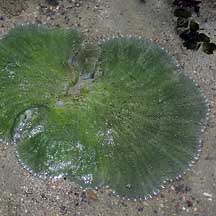 |
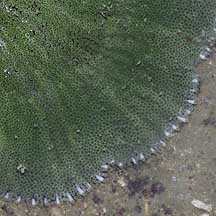 |
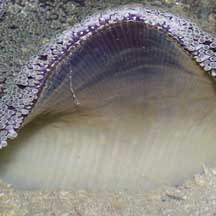 |
|
Haddon's
carpet anemone
(Stichodactyla haddoni) Large: 40-50cm Usually in sandy areas and among seagrasses, commonly seen at low tide. |
Oral disk densely covered in tentacles. Tentacles short, stubby with bulbous tips, sticky. Outer edge of the oral disk is 'fringed' with tentacles that are twice as long (exocoelic tentacles), alternating with short ones (endocoelic tentacles). | Body column pale, tiny bumps of the same colour, usually not visible. |
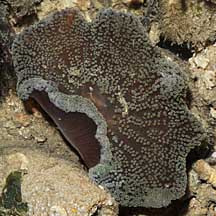 |
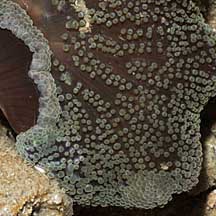 |
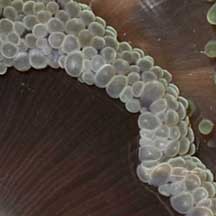 |
|
Mini
carpet anemone
(Stichodactyla tapetum) Tiny: 2-6cm Usually in sandy areas and among seagrasses, sometimes seen at low tide. |
Oral disk not densely covered in tentacles, often arranged in wedge shaped groups that resemble spokes of a wheel. Tentacles short, stubby, resembles beads. | Body column smooth, no visible bumps. |
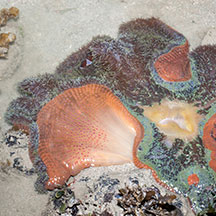 |
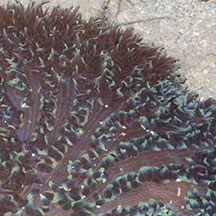 |
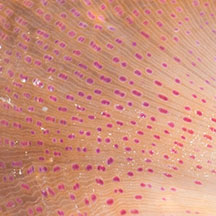 |
|
Giant
carpet anemone
(Stichodactyla gigantea) Large: 40-50cm Usually in coral rubble areas, commonly seen at low tide. |
Oral disk covered in tentacles which are not tightly packed.Tentacles slender with pointed tips, constantly moving when submerged, sticky. | Body column colourful, small colourful bumps in rows near the top of the body column. |
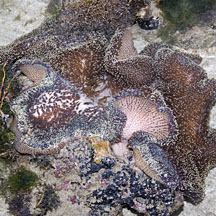 |
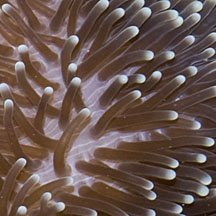 |
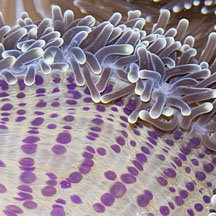 |
|
Merten's
carpet anemone
(Stichodactyla mertensii) Very large: up to 1m Usually on reefs, often at depth. Not commonly seen. |
Oral disk densely covered in tentacles. Tentacles may be short or long, thicker with blunt tips, not sticky. | Body column tan or white, colourful bumps magenta or orange. |
| More comparisons |
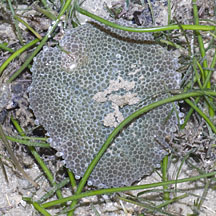 |
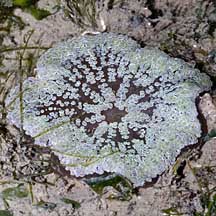 |
|
|
Young
Haddon's carpet anemone
(Stichodactyla haddoni) |
Mini
carpet anemone
(Stichodactyla tapetum) |
|
| Tentacles large relative to oral disk | Tentacles tiny relative to oral disk | |
| Fringe of long-short tentacles at the edge of the oral disk. | No fringe of long-short tentacles at the edge of the oral disk. |
| how to tell apart |